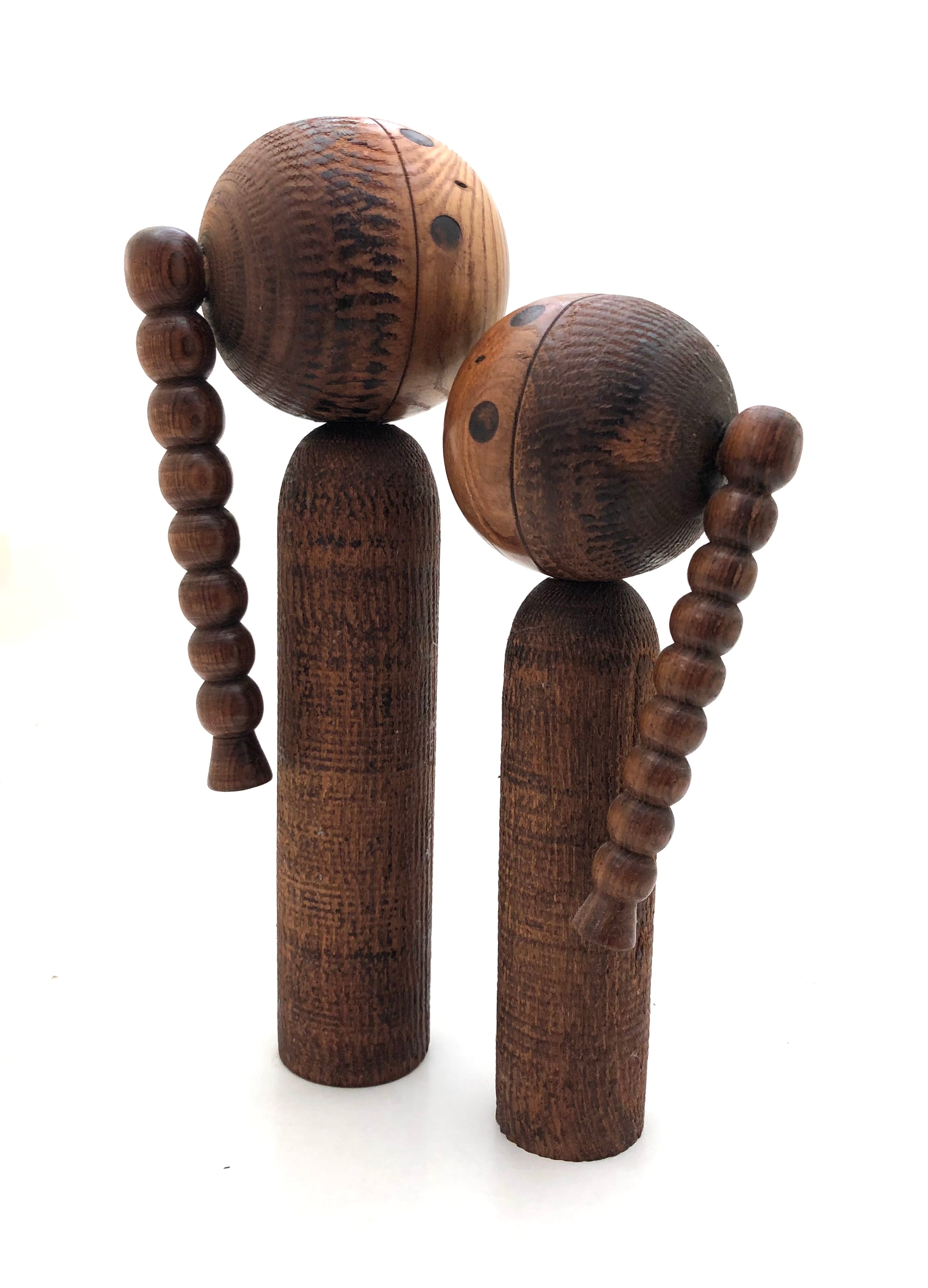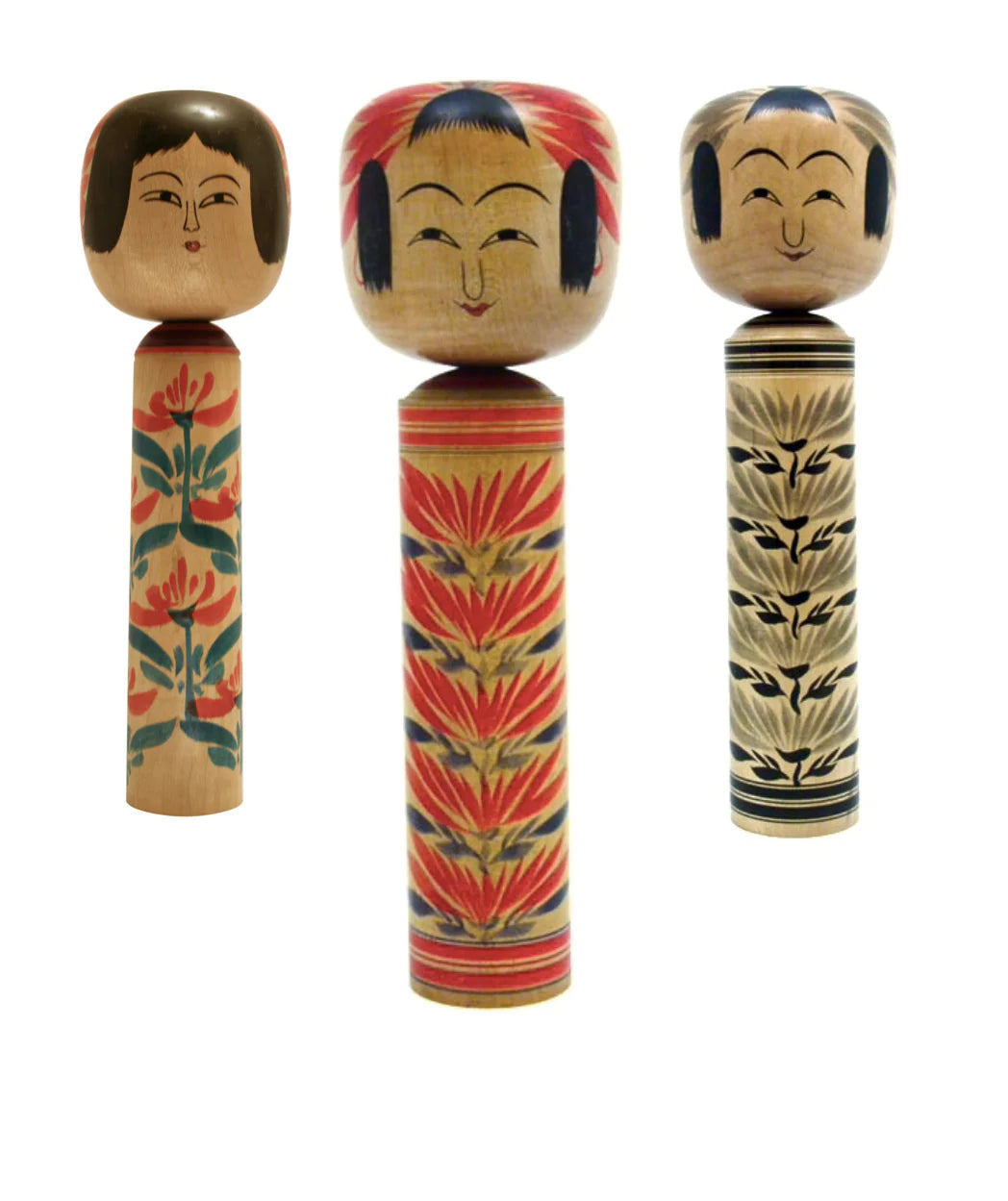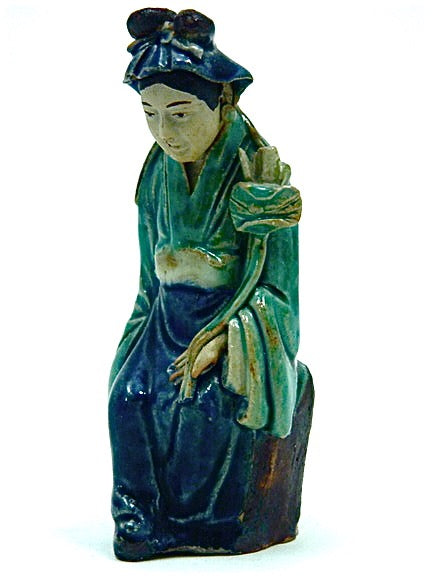
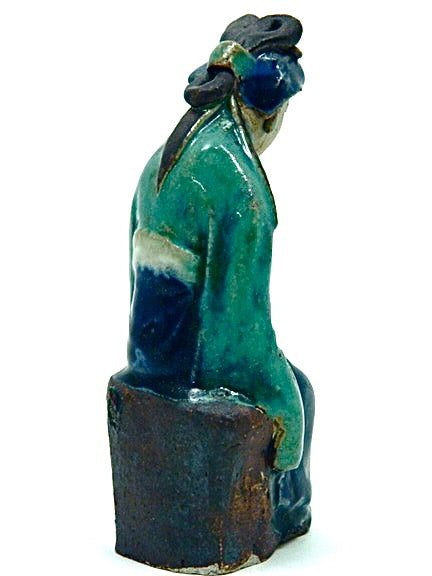
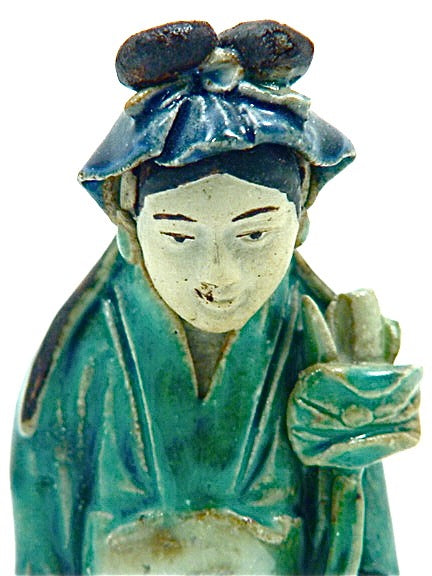
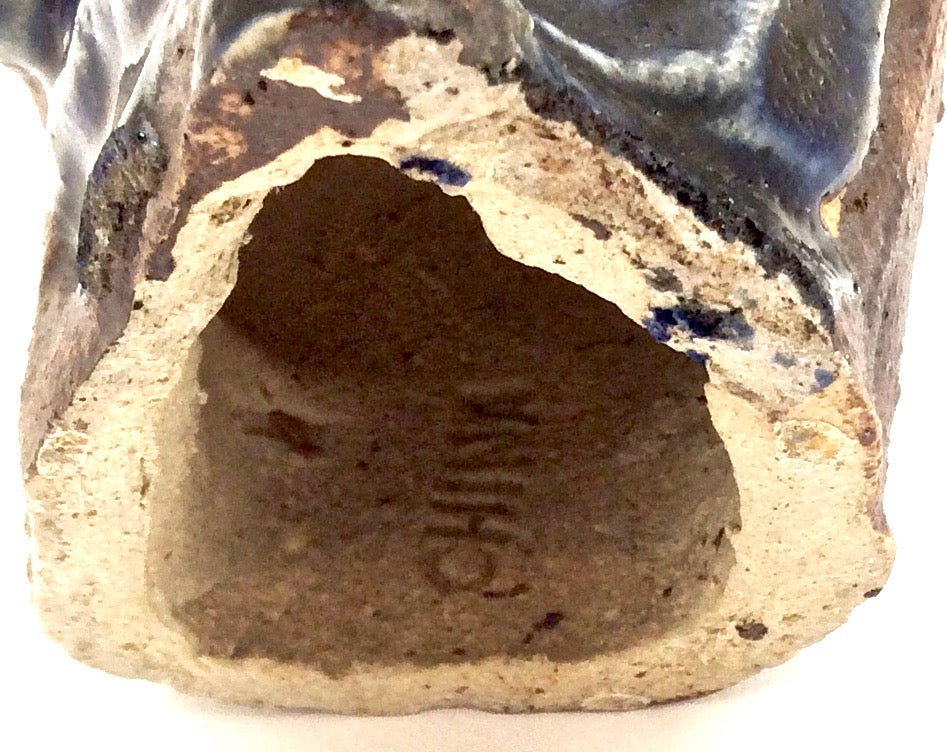
Antique Chinese Republic Shiwan (Shekwan) Pottery | Woman with Lotus flower
All our items ship free in the US
Dimensions: 2-1/2”w x 5-3/4”h
Here we are featuring a very rare, beautiful mud figure with layered tones, and well-defined coloring. It depicts a young woman sitting and holding a lotus flower. The variegated blue and green glazing is beautifully executed. The piece shows meticulous craftsmanship. Her fingers are very elongated, with wonderful delicate details of the folds on her robe, headdress, and traditional hairstyle. Earrings finish her wardrobe, and complement her elegant nature. The piece has the impressed seal, “CHINA” on the bottom, and indicates it was made between 1890-1919, after which time the mark changed. This piece was purchased in a small town located in Guangdong province, China in 1985 from a scholar who specialized in the history and folklore embodied in Shiwan ware.
Antique Condition: This is an extremely beautifully glazed figure in excellent condition: no chips or missing elements or repairs. “As is” and retains the original craft/workmanship. Any discoloration, chipping/cracking, surface wear or structural damage noted.
NOTE: Overview and Characteristics of Shiwan Art Pottery
As an important part of Chinese traditional culture, ceramic wares have a long history reflecting the customs of this ancient culture. One of the most famous types of ceramic works is called Shiwan (Shekwan) ware, which has been the shining star in Chinese folk ceramic art as early as the Tang and Song Dynasties (618-906AD), and which flourished in the Ming and Qing dynasties.
Chinese classical Shiwan ware is a type of traditional pottery that comes from the talented artists of a small town located in the south of China called Shiwan, in Foshan City, famous for its culture and pottery. Here craftsmen are well-known for their glazing techniques and unique forms. All the sculptural work is hand-formed, and sometimes involves numerous family members within a village, while directed by a master craftsman, every object is unique, and therefore, a limited edition, which attracts art collectors the world over. The three largest collections of Shiwan Art Pottery are housed in the Hong Kong Fung Ping Shan Museum, and the Chinese Cultural Centre in San Francisco.
Original Shiwan figurines, (1880-1940), are extremely rare because the art/craftsmanship and their delicate, fragile nature. The greater the detailing, the more likely the figure has been made by a master artist, hence the higher value. Also the larger the piece the more valuable, (8-0” or pieces over 20.0” tall) are extremely rare. The age of Shiwan ware can be verified by the markings, or lack of markings, the fact that they are hand-formed, depicting highly expressive figural forms and vivid imagery; primitive in sculpting techniques; the decorative elements associated with the figure; the deep rich glazes infused with the piece; the type of regional clay (sandy, course clay is the oldest), and the stylistic differences. Finally, pieces signed or stamped by the artist/craftsman are rare. The oldest Shiwan pieces, prior to 1890, will not have a signature or stamp.
DO NOT CONFUSE MUDMEN / MUD FIGURES WITH SHIWAN WARE! This unique artistic style made Shiwan ceramics extraordinarily splendid, (not to be confused with the export mud men, which were smaller figures made of mud-like clay forced into a mold and/or finger-formed, and used as decorative additions to in bonsai, planters and aquariums). These lack the expression, detail, and individuality of their glazed handmade counterparts). © 2019 — Vermillion Publishing
Return Policy
Our antique/vintage pieces are identified/described and professionally photographed, and considered, “as is”, therefore all sales are final. Read our full refund and return policy.


